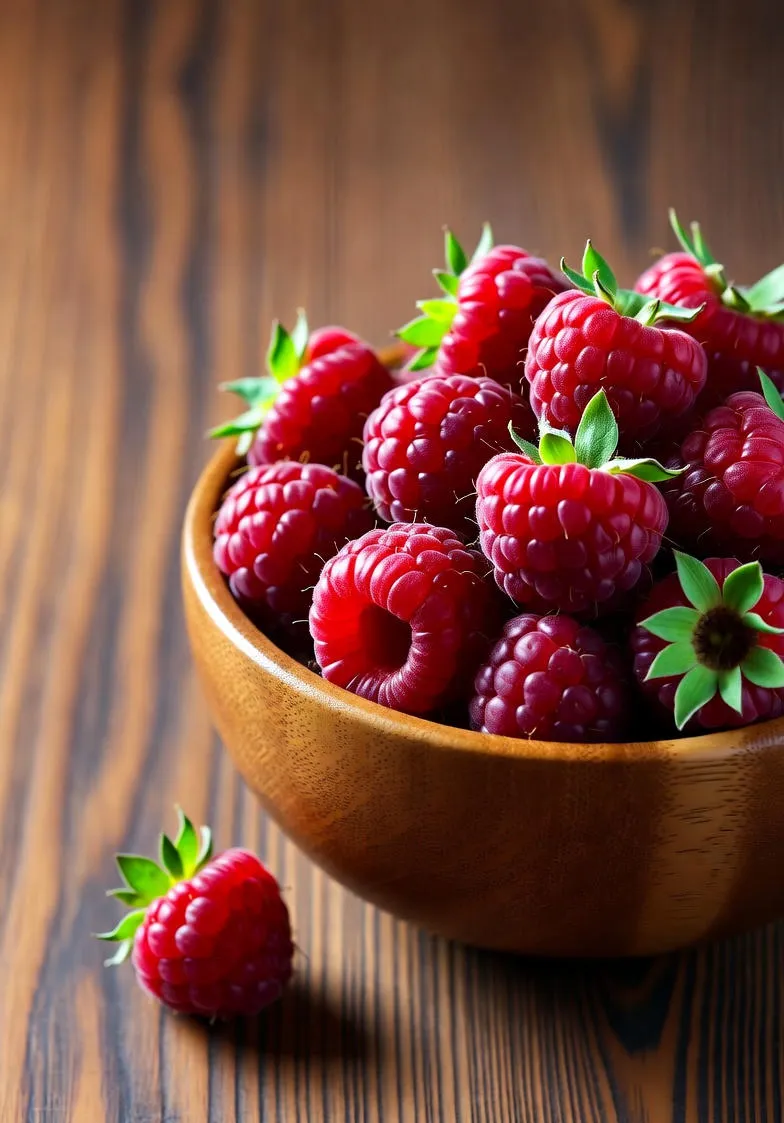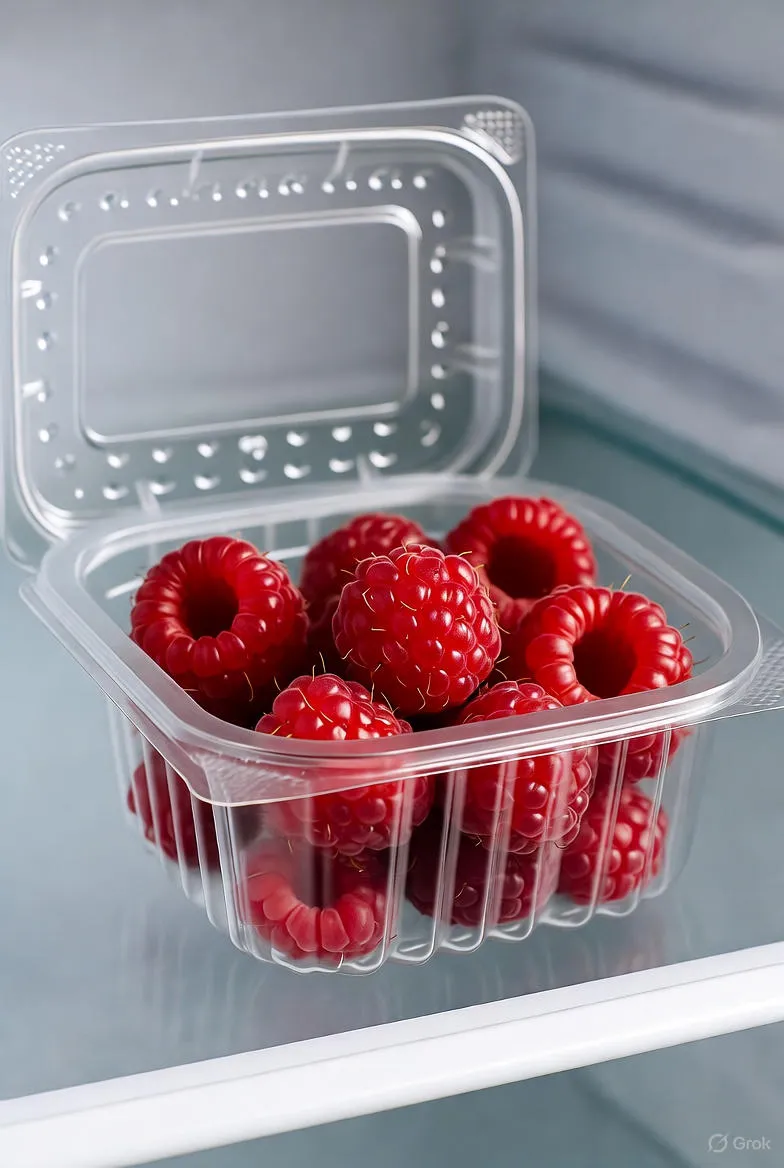Mastering the Art of Drying Raspberries: A Complete Step-by-Step Guide
Discover expert tips on how to dry raspberries at home using dehydrators, ovens, or natural methods. Preserve summer's bounty with our step-by-step guide for perfect dehydrated berries.

Introduction to Drying Raspberries
Raspberries, with their vibrant red hue and tart-sweet flavor, are a summer delight that many gardeners and foragers cherish. However, their short shelf life can be frustrating. Drying raspberries offers a fantastic way to preserve this seasonal treasure, locking in nutrients and intensifying their natural sweetness. Whether you're dealing with a bumper crop from your backyard or a haul from the local farmers' market, learning how to dry them properly ensures you can enjoy their essence year-round. This guide will walk you through every aspect, from preparation to storage, empowering you to create your own stash of dehydrated delights.
Why Dry Raspberries?
Drying raspberries isn't just about preservation; it's about transformation. Fresh raspberries spoil quickly due to their high water content—up to 85%—but removing that moisture concentrates their flavors and extends their usability. Dried raspberries become versatile pantry staples, perfect for snacking, baking, or infusing into teas and cocktails. Nutritionally, they retain most of their antioxidants, vitamins like C and K, and fiber, making them a healthy addition to trail mixes or smoothies. Plus, the process is eco-friendly, reducing food waste and allowing you to savor summer's bounty during the depths of winter.
Benefits of Home-Dried Raspberries
- Flavor Enhancement: Dehydration caramelizes the natural sugars, resulting in a chewier, more intense taste than fresh berries.
- Cost Savings: Buy in bulk during peak season and dry extras to avoid pricey out-of-season imports.
- Customization: Control the drying process to achieve your preferred texture, from leathery to crisp.
- Health Perks: Low-calorie and portable, they're an excellent alternative to candied fruits.
Beyond these perks, drying at home lets you avoid preservatives found in commercial products, ensuring a purer product straight from nature.
Preparing Raspberries for Drying
Success starts with selection. Choose ripe, firm raspberries that are plump but not overripe or mushy. Avoid any with mold, bruises, or insect damage—these can spoil the batch. Gently rinse the berries in cool water to remove dirt or residues, but don't soak them, as this adds unnecessary moisture. Pat them dry thoroughly with a clean kitchen towel or paper towels. For even drying, sort by size; smaller berries dry faster than larger ones.
Optional Pre-Treatments
To prevent discoloration and enhance shelf life, consider a quick dip in an ascorbic acid solution (1 teaspoon vitamin C powder dissolved in 2 cups water) for 5 minutes. This natural antioxidant keeps the bright red color intact. Alternatively, blanching—dipping in boiling water for 30 seconds followed by an ice bath—can help, though it's less common for delicate raspberries. Air-dry the pre-treated berries completely before proceeding.
Methods for Drying Raspberries
There are several ways to dry raspberries, each suited to different equipment and time constraints. We'll cover the most reliable home methods: using a food dehydrator, oven, air drying, and sun drying. Choose based on your setup and climate.
Using a Food Dehydrator
The dehydrator is the gold standard for consistent results, circulating warm air evenly to prevent hot spots.
- Arrange berries in a single layer on the trays, ensuring they're not touching to allow air flow.
- Set the temperature to 135°F (57°C) and dry for 10-18 hours, depending on berry size and humidity.
- Rotate trays halfway through for uniformity.
- Test doneness: Berries should be leathery and pliable, with no moisture when squeezed.
Pro tip: Load trays loosely—overcrowding extends drying time and risks uneven results.
Oven Drying Technique
If you lack a dehydrator, your oven works well with low, steady heat.
- Preheat to the lowest setting, ideally 140°F (60°C). If higher, prop the door open slightly with a wooden spoon to vent moisture.
- Line baking sheets with parchment paper and spread berries in a single layer.
- Dry for 6-12 hours, flipping halfway. Check frequently after 6 hours to avoid over-drying.
- Cool completely before storing; they'll crisp up as they rest.
Oven drying is faster but requires monitoring to prevent scorching, especially in older models with less precise controls.
Air Drying Indoors
For a no-equipment approach, air drying harnesses natural evaporation in a well-ventilated space.
- Thread berries onto clean string or dental floss, leaving space between each.
- Hang in a warm, dry room away from direct sunlight, like a pantry or kitchen corner.
- Allow 2-4 weeks, turning daily and discarding any that mold.
- Ideal for low-humidity environments; in humid areas, this method may fail.
Patience is key here—it's slower but uses zero energy, perfect for small batches.
Sun Drying Outdoors
When summer sun is abundant, harness it for free drying.
- Spread berries on mesh screens or cheesecloth-covered trays in full sun.
- Cover with a fine net to deter insects, but ensure air circulation.
- Bring indoors at night to avoid dew; dry for 3-7 days, stirring daily.
- Harvest when fully dehydrated—sun-dried berries often have a deeper, sun-kissed flavor.
This method shines in arid climates but isn't reliable in rainy or coastal regions.
Testing for Doneness and Cooling
Regardless of method, doneness is crucial to prevent spoilage. Squeeze a berry: it should bend without releasing juice. They shouldn't feel sticky or cold to the touch. After drying, let them cool on the tray for 30 minutes—temperature changes can cause condensation if packed warm. Conditioning follows: place in a large jar, shake daily for a week, and remove any that soften, ensuring the batch is uniformly dry.
Storing Dried Raspberries
Proper storage maintains quality for up to a year. Use airtight glass jars or vacuum-sealed bags, kept in a cool, dark pantry (below 70°F/21°C). Label with the date for rotation. For longer life, freeze in portions—they'll last indefinitely without quality loss. Avoid plastic bags long-term, as they can trap residual moisture. Regularly inspect for signs of moisture or pests, and if spotted, discard the affected berries immediately.
Common Mistakes and Troubleshooting
Even seasoned preservers encounter hiccups. Berries browning? That's oxidation—pre-treat next time. Uneven drying? Sort sizes and rotate. Mold appearing? Increase air flow or lower humidity. If they're too tough, rehydrate slightly in warm water before use, but aim for balance. Over-drying makes them brittle and flavorless, so err on the side of slight flexibility.
Troubleshooting Table
| Issue | Cause | Solution |
|---|---|---|
| Discoloration | Exposure to air | Ascorbic acid dip |
| Mold growth | Residual moisture | Conditioning period |
| Uneven texture | Overcrowding | Single layer arrangement |
Creative Uses for Dried Raspberries
Dried raspberries elevate everyday eats. Chop and fold into muffin batter for bursts of tartness, or grind into powder for yogurt toppings. Rehydrate in hot water for a simple tea, or infuse vodka for homemade liqueurs. In baking, they shine in scones, granola bars, or as a fruity twist on chocolate bark. For savory flair, sprinkle over salads or cheese boards. Experiment with pairings: their acidity cuts through rich creams or balances sweet pastries.
Quick Recipe: Raspberry Energy Bites
Ingredients: 1 cup dried raspberries, 1 cup oats, ½ cup nut butter, ¼ cup honey.
- Pulse raspberries in a food processor until crumbly.
- Mix with oats, nut butter, and honey until dough forms.
- Roll into balls; chill for 30 minutes. Yields 12 bites—perfect post-workout fuel.
These no-bake treats showcase the chewy texture beautifully.
Nutritional Breakdown
A ¼-cup serving of dried raspberries packs about 100 calories, 20g carbs (mostly fiber), and 4g protein. They're rich in manganese for bone health and ellagic acid, a potent antioxidant. Compared to fresh, they're more calorie-dense per volume due to water loss, so portion mindfully in diets.
Environmental and Seasonal Considerations
Drying aligns with sustainable practices, minimizing packaging waste from store-bought dried fruits. Time your harvest for July-August in the Northern Hemisphere, when raspberries peak. If foraging, respect ecosystems—pick only what you need and leave plenty for wildlife.
Advanced Tips for Expert Dryers
For larger yields, invest in a multi-tray dehydrator. Experiment with hybrid methods, like starting in the sun and finishing in the oven. Track conditions in a journal: humidity, temperature, and time, to refine your technique. Share extras with neighbors or at farmers' markets—dried raspberries make thoughtful gifts.
Conclusion
Mastering raspberry drying opens a world of flavor preservation, turning fleeting freshness into lasting joy. With these steps, you'll confidently tackle your next batch, wasting less and savoring more. Whether snacking straight or incorporating into recipes, home-dried raspberries bring garden-fresh taste to your table anytime. Happy drying!


